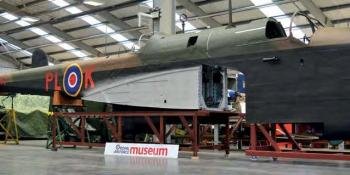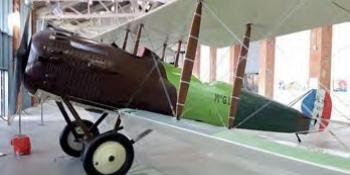
The forward fuselage of Gloster Meteor NF11 WD686 — the last aircraft to fly out of the RAF Telecommunications Research Establishment airfield at Defford, near Pershore, Worcestershire before it closed in 1958 — returned to its former home on 28 August. It has been restored by volunteers at the Boscombe Down Aviation Collection at Old Sarum, where the remainder of the airframe is still being worked on. The nose will be on display at the RAF Defford Museum until the end of October, after which it will move back to Old Sarum.
Once restoration of the remainder of the Meteor is completed, it is hoped that the reassembled WD686 will be transported the 90 miles north from Boscombe to Defford next year and go on temporary display at the museum, located in the National Trust site at Croome Park.
After the closure of Defford in 1958, WD686 made the short flight to Pershore, the new home of flying for the Royal Radar Establishment, where it spent the rest of its career on research for the RRE and Royal Aircraft Establishment. In the early 1970s the Meteor was to be found on the fire dump at RAE Bedford, until it became one of the first aircraft acquired by the Imperial War Museum for restoration at Duxford.
During 1991 WD686 went on loan to the Muckleburgh Collection, near Sheringham on the north Norfolk coast, where it deteriorated in the salty environment and faced the threat of scrapping.
Recognising WD686’s significance as a part of Defford’s history, members of the Defford Airfield Heritage Group were determined to save the airframe and raised funds to ensure its long-term preservation.
Ownership of WD686 has since been transferred to the Boscombe Down Aviation Collection. Working in its hangar at Old Sarum, it has meticulously restored the forward fuselage, including treatment of corrosion, replacement of the canopy glazing and refitting of cockpit controls and instruments. During the Second World War and the Cold War years which followed, airborne radar was tested, developed and proven at Defford, one of the most secret establishments in the UK. The airfield was built in the grounds of Croome, the ancestral seat of the Earls of Coventry.







